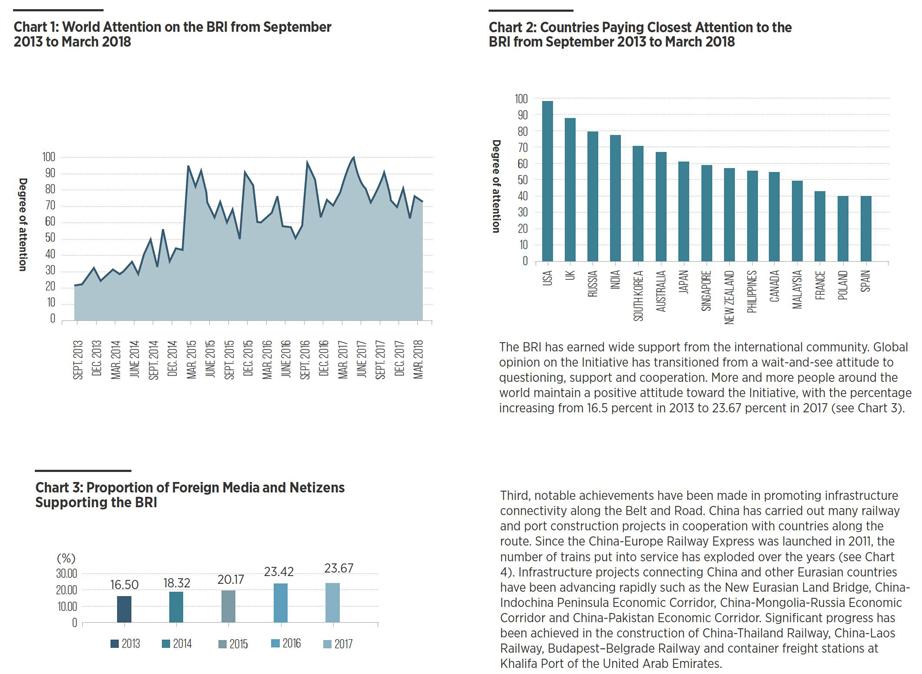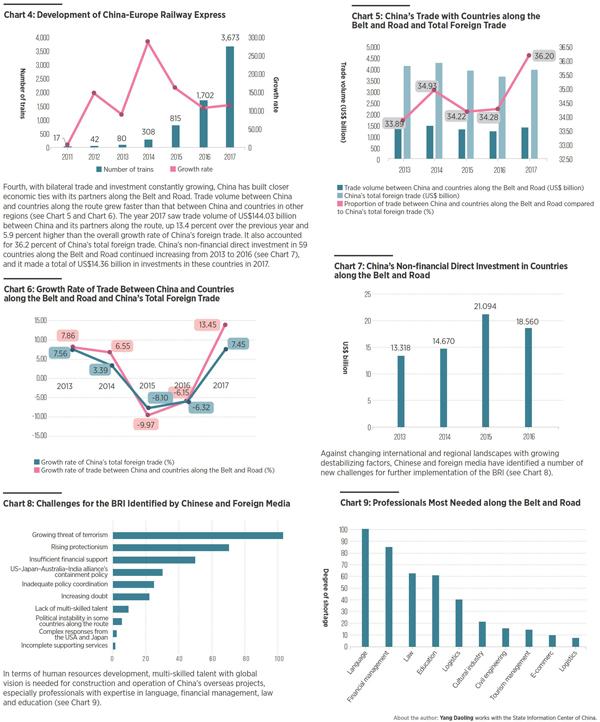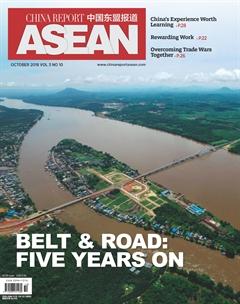Belt&Road:Facts&Figures
Yang Daoling


Analysis of about 50 million pieces of data collected from mainstream news media and social media both at home and abroad between September 1, 2013 and May 30, 2018 shows that since it was proposed five years ago, the Belt and Road Initiative (BRI) has made remarkable progress in promoting policy coordination, connecting infrastructure and facilities, streamlining trade, integrating financing and fostering closer people-to-people ties along the route. The Initiative has achieved increased global significance over the past five years, while at the same time it faces new challenges.
First, the BRI is gaining increasing attention from the international community. Chinese and foreign media have kept a close eye on the Initiative since it was first announced in 2013 (see Chart 1). Milestone events and announcement of top-level planning have drawn global attention, including the white paper Joining Hands to Build a Silk Road Economic Belt and a 21st-Century Maritime Silk Road – Vision and Actions issued in March 2015, founding of the Asian Infrastructure Investment Bank (AIIB) in December 2015, the Belt and Road Forum for International Cooperation held in May 2017, and the inclusion of the Initiative into the Party Constitution in October 2017. Countries in Europe, North America, Northeast Asia and Southeast Asia have paid closest attention to the grand plan, especially the United States, the United Kingdom, Russia, India and South Korea (see Chart 2).

